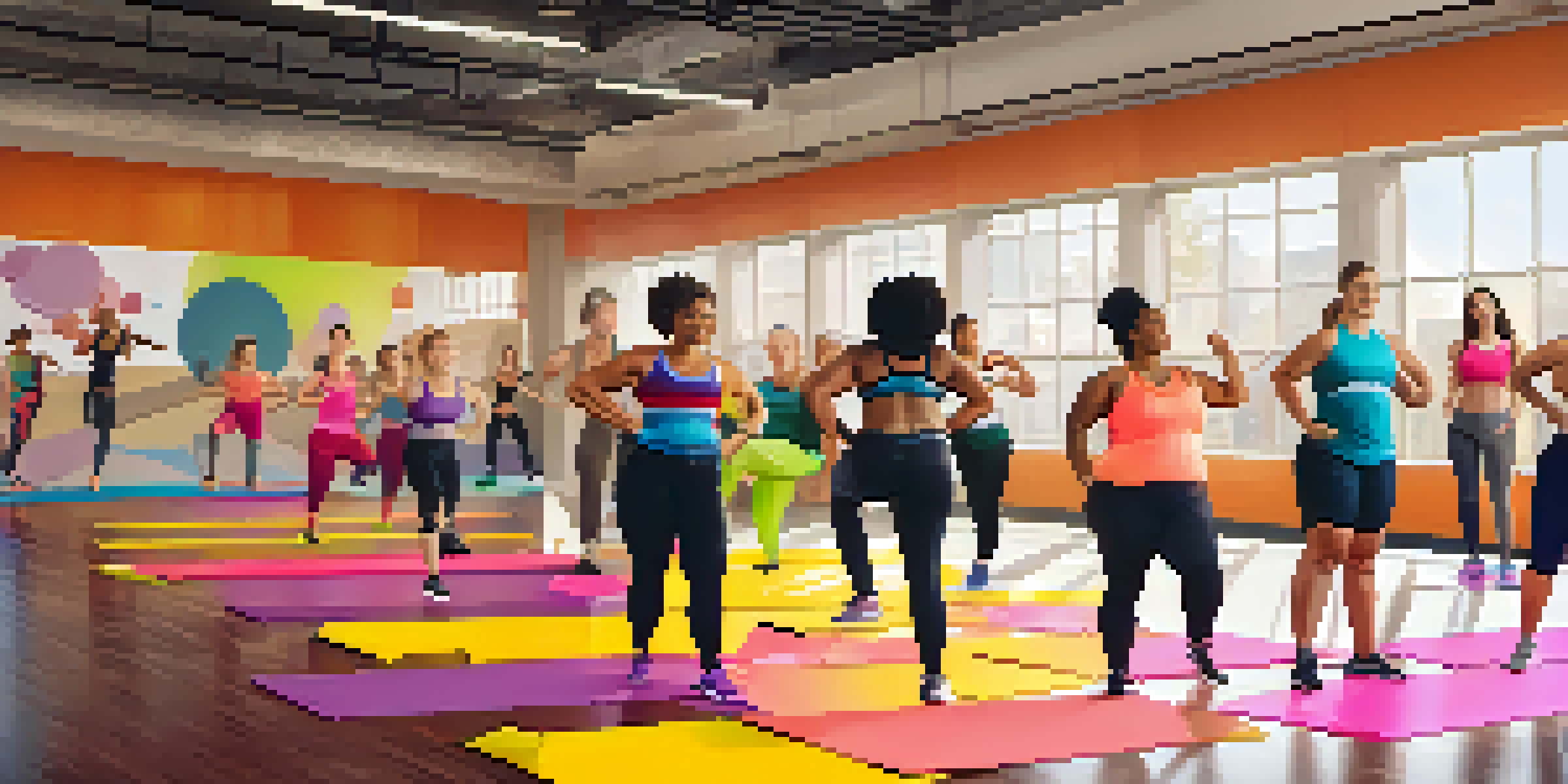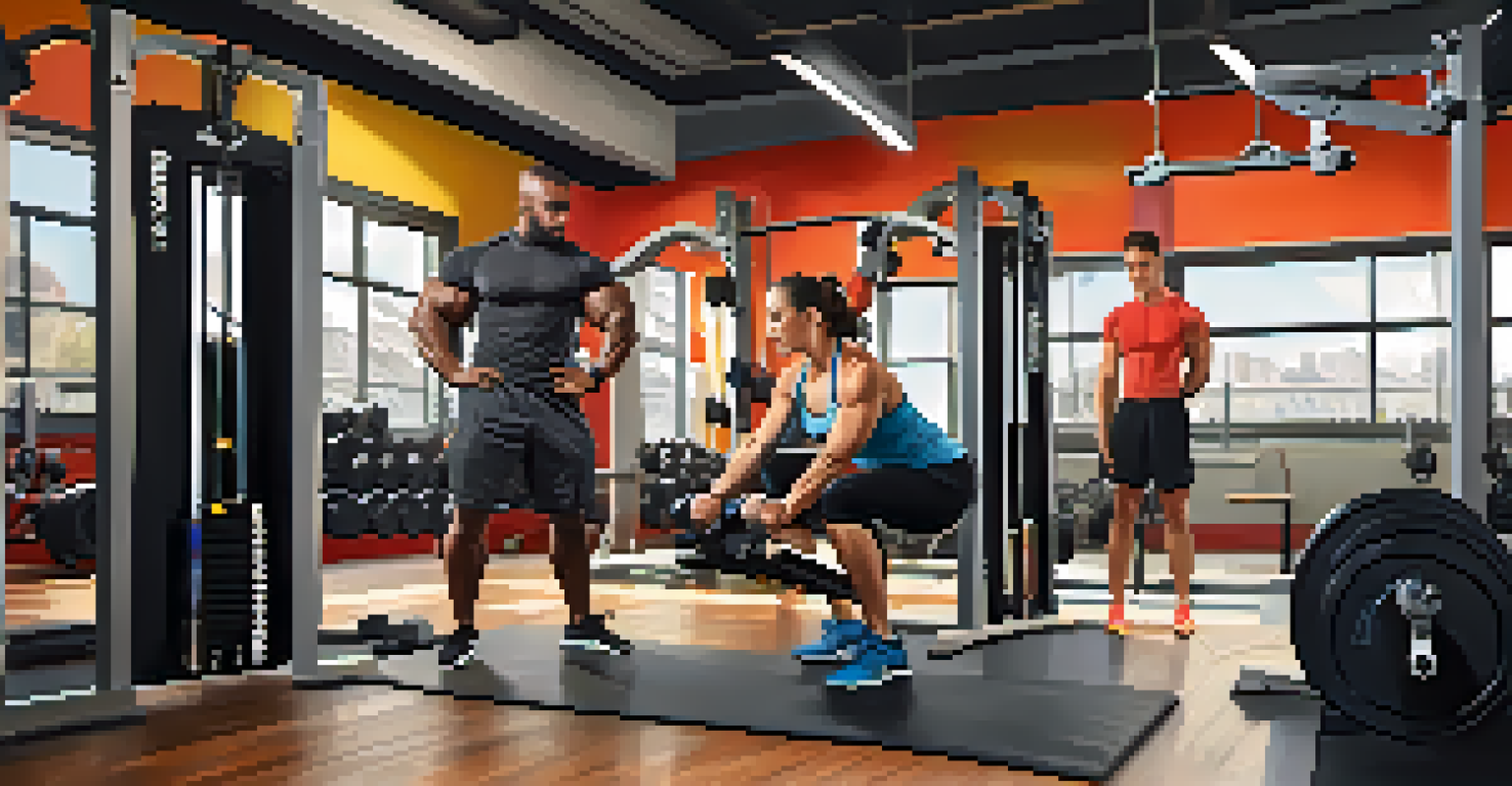Embracing Diversity: Body Types in Bodybuilding and Fitness

Understanding Body Diversity in Fitness Culture
Body diversity in fitness is about recognizing and celebrating the different shapes and sizes that people come in. It's essential to understand that fitness isn't one-size-fits-all; rather, it’s a unique journey for everyone. Just like a painter uses various colors to create a masterpiece, the fitness community thrives on the richness of diverse body types.
The body achieves what the mind believes.
When we embrace diversity in bodybuilding and fitness, we create a more inclusive environment where everyone feels welcome. This inclusivity allows individuals to find their place within the fitness world, irrespective of their starting point or body type. By acknowledging and valuing different body forms, we empower others to pursue their fitness goals without fear of judgment.
Moreover, celebrating body diversity encourages individuals to appreciate their own unique physiques. This shift in mindset can lead to improved mental well-being and self-acceptance. After all, fitness should be about health and happiness, rather than conforming to a narrow ideal.
The Impact of Media Representation on Body Image
Media representation plays a crucial role in shaping our perceptions of body types in fitness. Historically, mainstream media has often favored a narrow standard of beauty, primarily showcasing muscular or extremely lean physiques. This limited representation can lead to unrealistic expectations and body image issues for many individuals aspiring to get fit.

However, recent shifts in media narratives are beginning to challenge these norms. More influencers and athletes are showcasing their diverse body types, celebrating authenticity over perfection. This change promotes the idea that every body can be strong and beautiful, regardless of how it compares to traditional fitness standards.
Celebrate Body Diversity in Fitness
Embracing various body types fosters inclusivity, empowering individuals to pursue their unique fitness journeys without fear of judgment.
By diversifying the types of bodies we see in fitness media, we also encourage others to share their journeys. This can create a ripple effect, motivating a wider audience to engage with fitness and bodybuilding without feeling pressured to meet specific standards. It’s time to redefine what it means to be fit and healthy, celebrating all bodies along the way.
The Role of Personal Training in Body Diversity
Personal trainers are pivotal in promoting body diversity within the fitness industry. They have the unique opportunity to tailor their approaches to accommodate various body types, ensuring every client feels valued and understood. This individualized attention can help clients achieve their personal fitness goals while fostering a sense of belonging.
Fitness is not about being better than someone else. It's about being better than you used to be.
A good trainer recognizes that each body reacts differently to exercise and nutrition. By understanding these differences, they can create programs that not only meet the physical needs of their clients but also support their mental and emotional well-being. This holistic approach can boost confidence and encourage clients to embrace their unique body types.
Moreover, personal trainers can be advocates for body diversity, challenging stereotypes and encouraging inclusivity in their own practices. By promoting varied body types, they help to shift the narrative around fitness, inspiring clients to appreciate their own strengths and abilities.
Strength Training for Different Body Types: A Guide
Strength training can be adapted to suit various body types, making it accessible to everyone. Whether you have an athletic build, are curvier, or fall somewhere in between, there are effective strength training exercises for you. The key is to focus on movements that feel right for your body and align with your fitness goals.
For instance, individuals with a naturally lean physique might benefit from heavier weights and lower repetitions to build muscle mass. In contrast, those with a curvier body type may find that lighter weights and higher reps work better for toning and endurance. Understanding your body's unique needs can lead to more effective and enjoyable workouts.
Media Representation Matters
Diverse portrayals in fitness media encourage a broader acceptance of all body types, promoting authenticity over unrealistic standards.
Additionally, embracing diverse body types in training creates a supportive atmosphere where everyone learns from one another. Sharing experiences can help individuals discover new techniques that work for their specific body type, ultimately fostering a sense of community and shared growth.
Nutrition: Tailoring Diets to Diverse Body Types
Nutrition is a vital component of bodybuilding and fitness that should also embrace diversity. Different body types require different nutritional strategies to fuel workouts and recovery effectively. By recognizing these differences, individuals can create personalized meal plans that support their unique fitness journeys.
For example, someone with a fast metabolism might need more frequent meals and higher calorie intake to gain muscle. Alternatively, someone who is more sedentary may benefit from a balanced diet focusing on whole foods to maintain a healthy weight. Understanding these nuances can help individuals meet their fitness goals while feeling satisfied and energized.
Moreover, fostering a diverse approach to nutrition encourages people to explore various foods and diets that work for them. This not only enhances personal well-being but also promotes a culture of acceptance around different eating habits, reducing the stigma surrounding specific diets.
Community Support and Inclusivity in Fitness
Building a supportive community is essential for promoting body diversity in fitness and bodybuilding. When individuals feel accepted and valued for who they are, they are more likely to engage actively in their fitness journeys. Communities can be formed through gyms, online platforms, or social media, offering spaces for people to connect and share their experiences.
Inclusivity in these communities can manifest in various ways, such as hosting events that celebrate all body types or providing resources that cater to diverse needs. By creating an environment where everyone feels welcome, we can encourage more individuals to participate in fitness activities, regardless of their body type.
Personal Training for All Bodies
Personal trainers play a crucial role in supporting body diversity by tailoring fitness programs that address individual needs and promote self-acceptance.
Furthermore, support from peers can significantly boost motivation and accountability. Sharing successes and challenges with others fosters a sense of belonging and encourages individuals to continue their fitness journeys, knowing they are not alone in their endeavors.
The Future of Body Diversity in Bodybuilding and Fitness
The future of bodybuilding and fitness looks promising as awareness around body diversity continues to grow. With more voices advocating for inclusivity, we can anticipate a shift in how fitness is perceived and practiced. It's exciting to envision a world where every body type is celebrated, and everyone feels empowered to pursue their fitness goals.
As the fitness industry evolves, we can expect to see more diverse representation in media, competitions, and training programs. This evolution will foster a culture that values health and well-being over conformity to traditional body standards. By embracing this change, we can create a more inclusive fitness community for all.

Ultimately, the journey toward body diversity in fitness is about acceptance and empowerment. By embracing our differences, we can inspire others to feel confident in their bodies and pursue their health goals, creating a richer, more vibrant fitness culture for everyone.